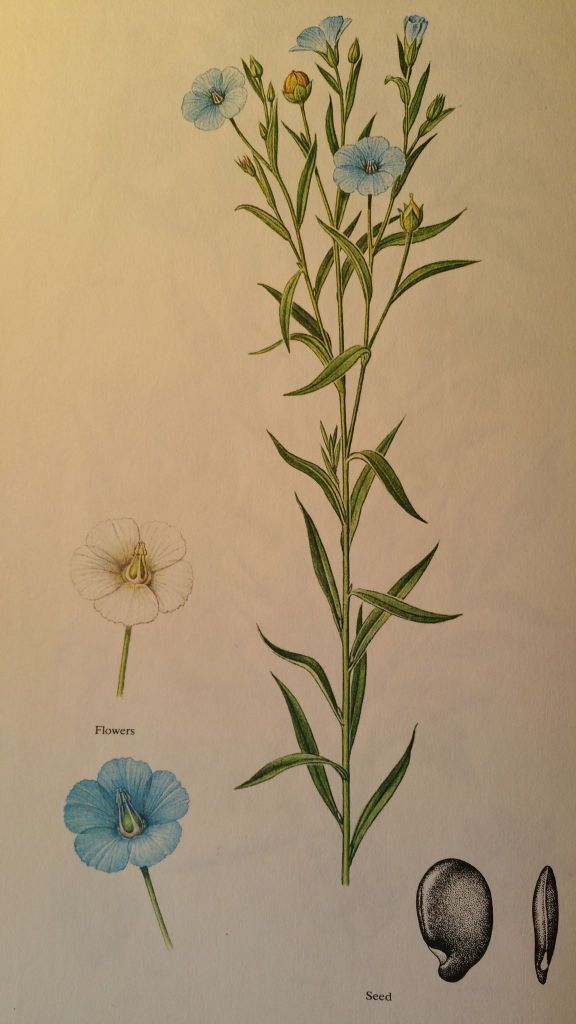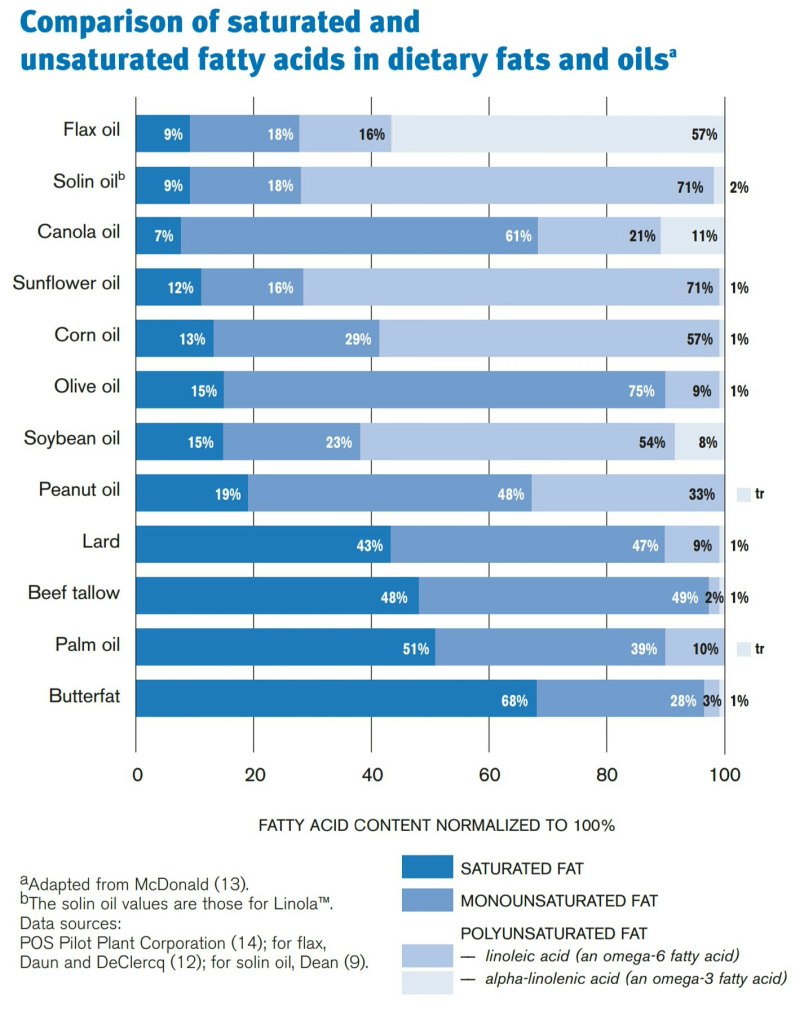Flax in an annual herb with a tall lean appearance. Thin slender stems, with similarly slender leaves, branch towards the top producing an elegant plant that can possess blue or white flowers (figure 1). Flax was known historically through Mesopotamian, Egyptian and Roman times for its oil and fibres, which were a prized commodity and extensively traded. The fibres from flax, as with hemp, are useful for binding together to form cloth and rope, and flax fibres are often used to create linen and other cloths. The flax plant contains some interesting nutritional factors that are worthy of discussion, and these relate largely to the seeds, which are edible and can vary in colour from golden to dark brown. Flax seeds are a rich source of mucilaginous fibre, and the crushed seeds are very adept at absorbing water to form a semi-viscous gel. This makes crushed seeds an excellent cure for constipation, as the crushed seeds act as a demulcent and laxative upon the uptake of water in the gut.

Figure 1. The distinctive tall slender appearance of the flax plant. Picture taken from: Stodola, J., Volak, J. and Severa, F. 1984. Illustrated Book of Medicinal Herbs. Octopus Books, London. First edition.
Flax seeds are also an important source of polyunsaturated oil. In particular flax seeds are a rich source of omega 3 polyunsaturated fatty acids, but as relatively poor source of omega 6 polyunsaturated fatty acids. This makes flax oil diametrically opposed to most other vegetable oils which generally contain more omega 6 fatty acids than they do omega 3 fatty acids (figure 2). The omega 3 fatty acid content of flax seeds comprises mainly of alpha linolenic acid (~60 %), but also contains linoleic acid (~15 %), oleic acid (~15 %) and stearic acid (10 %). The high content of linolenic acid makes flax an ideal dietary adjunct to balance the high amounts of omega 6 polyunsaturated fatty acids inherent in the normal diet. Current estimates are that the omega 6 to omega 3 fatty acid ratio may be 10 or 20 to 1, but should be closer to 3 to 1. Flax oil makes a useful addition to balance this ratio, and this allows the correct metabolism of the essential fatty acids and thereby reduces inflammation and its associated oxidative stress.

Figure 2. The fatty acid profiles of some common fats and oils. Illustration taken from the Flax Council (here).
Another interesting nutritional facet to the flax seed is the presence of the fibre associated polyphenolic substances called lignans. Lignans are plant secondary metabolites derived from the amino acid phenylalanine, and can be classified to a group called the phyto-oestrogens, on account of their oestrogenic activity in mammals. When ingested lignans are metabolised by gut bacteria where they can form enterodiol and enterolactone, and upon absorption these metabolites interact with the oestrogen receptor. Lignans can increase the production of sex hormone binding globulin and this may modify the plasma levels of free oestrogen. One effect that lignan metabolites may exert is a specific anti-cancer effect where oestrogen is a cause. Therefore oestrogen positive cancers such as breast cancer may respond to supplemental flax seeds, and human studies do support this contention. One study for example showed a reduction of oestrogen levels by the addition of up to 10 grams of flax seeds to the diet daily.
RdB
